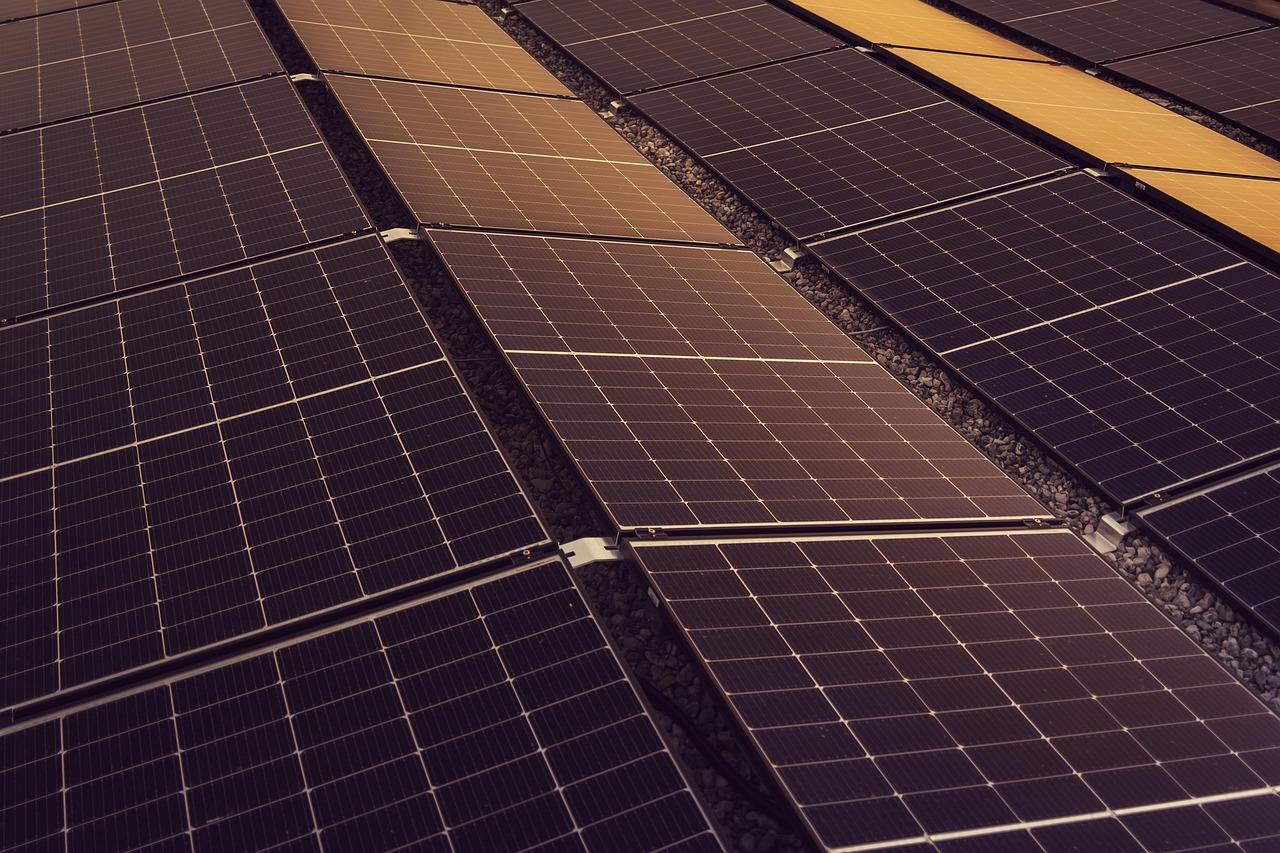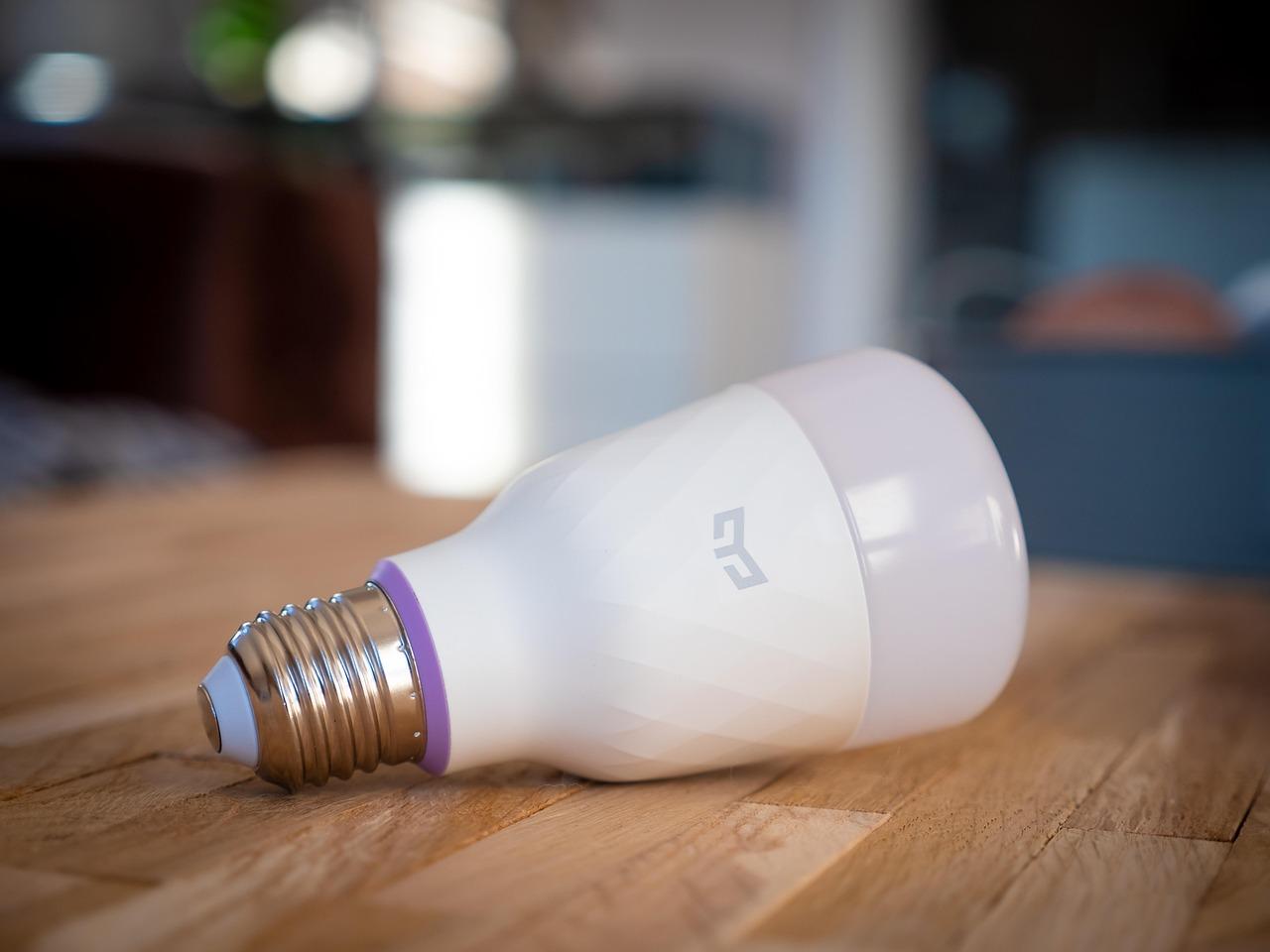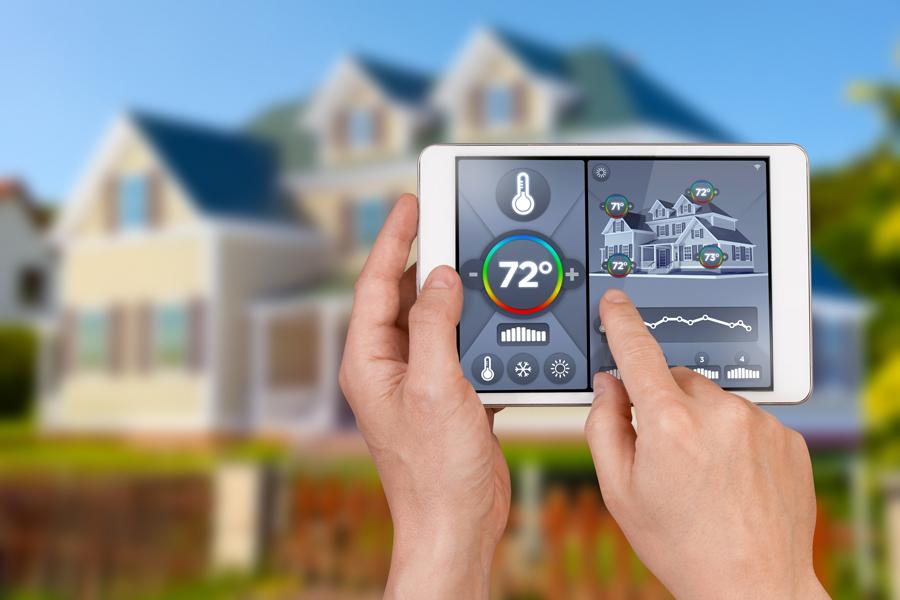In a world where technology intertwines seamlessly with sustainability, the concept of home automation has evolved into a pivotal player in our quest for energy efficiency. Imagine a living space that not onyl caters to your comfort but also adheres to eco-amiable principles—where lights dim automatically as the sun sets, thermostats adjust without a second thought, and appliances only operate when energy demand is low. Welcome to the era of “Green & Smart,” where innovative home automation offers practical solutions for reducing energy consumption while enhancing our daily lives. In this article, we’ll explore a variety of tips and strategies that empower you to transform your home into an intelligent, energy-saving haven. Join us as we delve into the convergence of modern technology and environmental consciousness, revealing how small changes can lead to significant impacts for both your home and the planet.
Innovative Technology for Energy Efficiency in Your Home
Embracing energy efficiency in your home starts with innovative technology that can considerably reduce your energy consumption. Smart devices such as smart thermostats not only allow you to control your heating and cooling systems from your smartphone but also learn your habits to optimize your home’s temperature. By adjusting automatically based on when you’re home or away, these devices can save you significantly on your utility bills.
Another remarkable addition to energy-efficient homes is smart lighting. Utilizing LED bulbs paired with smart lighting systems can dramatically decrease your energy footprint. With features like motion sensors and automated dimming, you can ensure that lights are only on when needed.Consider these options to enhance your lighting efficiency:
- Motion sensors: Automatically turn lights off when a room is unoccupied.
- Dimmers: Adjust brightness based on natural light and time of day.
- Smart plugs: Control power consumption of any device remotely.
Lastly, energy monitoring systems provide real-time insights into your energy usage, enabling you to identify wich appliances consume the most energy. This can be particularly useful in creating a more efficient household. By tracking patterns and making simple changes, such as unplugging devices when not in use or upgrading to energy-efficient appliances, you can drastically improve your overall efficiency. Here’s a swift comparison of common household appliances and their average energy consumption:
| Appliance | Average Watts |
|---|---|
| Refrigerator | 100-800 |
| Washing Machine | 500-1000 |
| Television | 50-400 |
| microwave oven | 600-1200 |

Smart Lighting Solutions for a Greener Living Space
As we continue to seek ways to minimize our environmental impact,smart lighting solutions are paving the way toward a more sustainable lifestyle. Integrating energy-efficient bulbs with innovative controls allows homeowners to reduce waste and maximize efficiency. Consider replacing traditional incandescent bulbs with LED lights, which consume significantly less energy and last up to 25 times longer. Furthermore, smart lighting systems come equipped with features like motion sensors and dimmers that adjust brightness based on the time of day or room occupancy, ensuring that energy is not wasted in unoccupied spaces.
To elevate your home’s smart lighting capabilities, explore the integration of smart hubs and voice-activated assistants. these tools enable you to control your lighting remotely or through simple voice commands, streamlining your home’s energy management even further. With the ability to program schedules and set alerts for when lights are left on, you can foster a more conscientious approach to energy use. Moreover, consider the option of different lighting zones, allowing you to customize ambiances in various rooms and adjust usage based on your daily routine to conserve lighting without compromising comfort.
| Smart Lighting Feature | Benefits |
|---|---|
| Motion sensors | Automatically turn off lights to save energy |
| Smart Hubs | Central control of all lighting via smartphone or voice |
| Dimmer Switches | Adjust light intensity to suit different times and activities |
| Energy Monitoring | Track usage patterns and identify savings opportunities |

automated Climate Control: Maximizing comfort and Sustainability
Automated climate control systems offer an innovative way to not only maintain the optimum temperature in your home but also to enhance energy efficiency and minimize your carbon footprint. With smart thermostats and sensors, you can program heating and cooling schedules based on your lifestyle and preferences, ensuring that your home remains comfortable without unnecessary energy consumption. As a notable example, you could set your heating to lower when you’re at work and have it warm up just before your return.
Along with programmable settings, many systems can learn your habits over time, adjusting temperatures automatically based on your routines. These smart devices can also respond to real-time weather data, ensuring that your indoor climate adapts to seasonal changes without manual intervention. Employing features like geofencing allows your climate control system to detect when you’re home or away, offering further opportunities for energy savings while maintaining comfort. Such adaptability not only optimizes energy use but also extends the life of your HVAC system.
Implementing a whole-home approach with interconnected devices amplifies the benefits of automated climate control. Consider utilizing the following elements for maximum efficiency:
- Smart Vents: Control airflow to specific rooms, reducing heating/cooling in unoccupied spaces.
- Humidity Sensors: Monitor and adjust moisture levels to improve comfort and energy management.
- Window Sensors: Automatically close systems when windows are open to prevent energy loss.
By harmonizing these technologies, you create a seamless, efficient living environment that balances comfort and sustainability, ensuring that your home is both a sanctuary and a responsible contributor to energy conservation.

integrating Renewable Energy Sources into Home Automation
Integrating renewable energy sources into your home automation system opens up a world of efficiency and sustainability. By combining smart technology with solar panels, wind turbines, or even geothermal energy, homeowners can effectively reduce their carbon footprint while enjoying cost savings. With the help of smart meters and real-time monitoring, tracking energy consumption and harnessing excess energy becomes effortless, ensuring that you maximize the potential of your renewable sources.
You can take advantage of smart devices that automatically optimize energy use based on availability. For instance, programmable thermostats can adjust heating and cooling according to real-time energy generation data. Scheduling high-energy tasks, like running your washing machine or charging electric vehicles, to coincide with peak solar production can lead to ample savings. Consider integrating these elements into your home automation system:
- Smart Solar Inverters: Manage the energy produced by your solar panels.
- Battery Storage Systems: Store excess energy for later use.
- Energy Management Systems: Analyze consumption patterns and recommend automation adjustments.
to illustrate the benefits of renewable energy integration, here’s a comparison of energy consumption and savings:
| Feature | Before Integration | After Integration |
|---|---|---|
| Monthly Energy Bill | $200 | $100 |
| Renewable Energy Utilization | 10% | 70% |
| Carbon Footprint (kg CO2) | 600 | 300 |
with the right setup, these technologies not only enhance your home’s comfort and convenience but also contribute significantly to a greener planet. The shift towards renewable energy in home automation reflects a growing trend that merges ecological obligation with cutting-edge innovation, paving the way for a sustainable future.
Q&A
Q&A: Green & Smart – Energy-Saving Home Automation Tips
Q1: What exactly is home automation, and how does it contribute to energy savings?
A1: Home automation refers to the use of technology to control various household systems and appliances remotely and intelligently. This includes lighting, heating, cooling, security, and even water usage. By automating these systems, homeowners can optimize energy consumption by adjusting usage patterns based on occupancy, personal habits, and real-time conditions.This not only reduces the energy bill but also minimizes the carbon footprint.
Q2: Which automation systems are most effective for saving energy?
A2: Several automation systems stand out for their energy efficiency potential. Smart thermostats, for instance, learn your temperature preferences and can adjust heating and cooling accordingly, reducing unnecessary energy waste. Smart lighting systems allow you to use LED bulbs and can be programmed or controlled remotely to turn off when you leave a room. additionally, smart plugs and energy monitors can help track and manage power consumption, giving you insights into how much energy each appliance uses.
Q3: How can I integrate energy-saving automation into my home without a major overhaul?
A3: Integrating energy-saving automation doesn’t have to be a huge investment. Start with smart plugs and bulbs,which are easy to install and provide immediate energy savings. Add smart power strips that automatically cut power to devices when they’re not in use.You can also gradually install a smart thermostat or smart shades that adjust according to the sun’s position, reducing heating and cooling costs.
Q4: Are there specific features I should look for in energy-saving home automation devices?
A4: Yes! When choosing energy-saving devices, look for features such as occupancy sensors, energy usage tracking, and remote control capabilities. Devices compatible with home assistants like Amazon Alexa or Google Assistant can offer added convenience. Moreover,some products provide advanced scheduling options,allowing you to maximize savings during peak and off-peak energy times.
Q5: Can home automation systems help in reducing water waste as well?
A5: Absolutely! Smart home devices can assist in managing water usage, with options like smart irrigation systems and leak detection sensors. Smart irrigation systems utilize weather data to optimize watering schedules for lawns and gardens, ensuring plants receive the right amount of water without waste. Simultaneously occurring, leak detection systems alert homeowners to potential issues before they escalate, such as dripping faucets or running toilets, preventing unnecessary water loss.
Q6: What are some common misconceptions about energy-saving home automation?
A6: One common misconception is that energy-saving home automation systems are too expensive and complex to install. While some systems may carry higher upfront costs, many affordable options are available that do not require extensive installation. Additionally, users may believe that automation is only for tech-savvy individuals; though, most modern devices are designed with user-friendly interfaces and easy-to-follow instructions, making them accessible for everyone.
Q7: How can I measure the effectiveness of my energy-saving automation efforts?
A7: Measuring the effectiveness of your energy-saving automation can be accomplished by tracking your energy bills before and after installation.Additionally, many smart devices come with integrated apps that provide insights into energy consumption, allowing you to see how much energy you save over time. Monitoring these metrics can highlight the areas with the most significant savings and inform future improvements.
Q8: Do you have any final tips for homeowners wanting to embrace energy-saving home automation?
A8: Start small and gradually integrate automation into your daily life. Prioritize systems that will give you the biggest impact on energy savings, and make sure to take advantage of available rebates or incentives for energy-efficient products. Lastly, stay informed about new technologies and innovations; the field of home automation is rapidly evolving, offering ever-greater opportunities for energy conservation.
in Conclusion
embracing the dual principles of green living and smart technology can transform your home into an oasis of efficiency and sustainability. By integrating energy-saving automation solutions,you not only reduce your carbon footprint but also enhance your daily comfort and convenience.From smart thermostats to automated lighting systems, each small adjustment plays a significant role in creating a more eco-friendly environment.
As you embark on this journey towards a greener and smarter home, remember that every energy-saving decision contributes to a larger purpose—preserving our planet for future generations. Let innovation and sustainability guide your choices,inspiring you to create a living space that reflects both your values and your vision for a smarter,greener world. Together, we can build homes that do more than just shelter us; let’s make them stewards of the environment. The future is bright, efficient, and in our hands.
